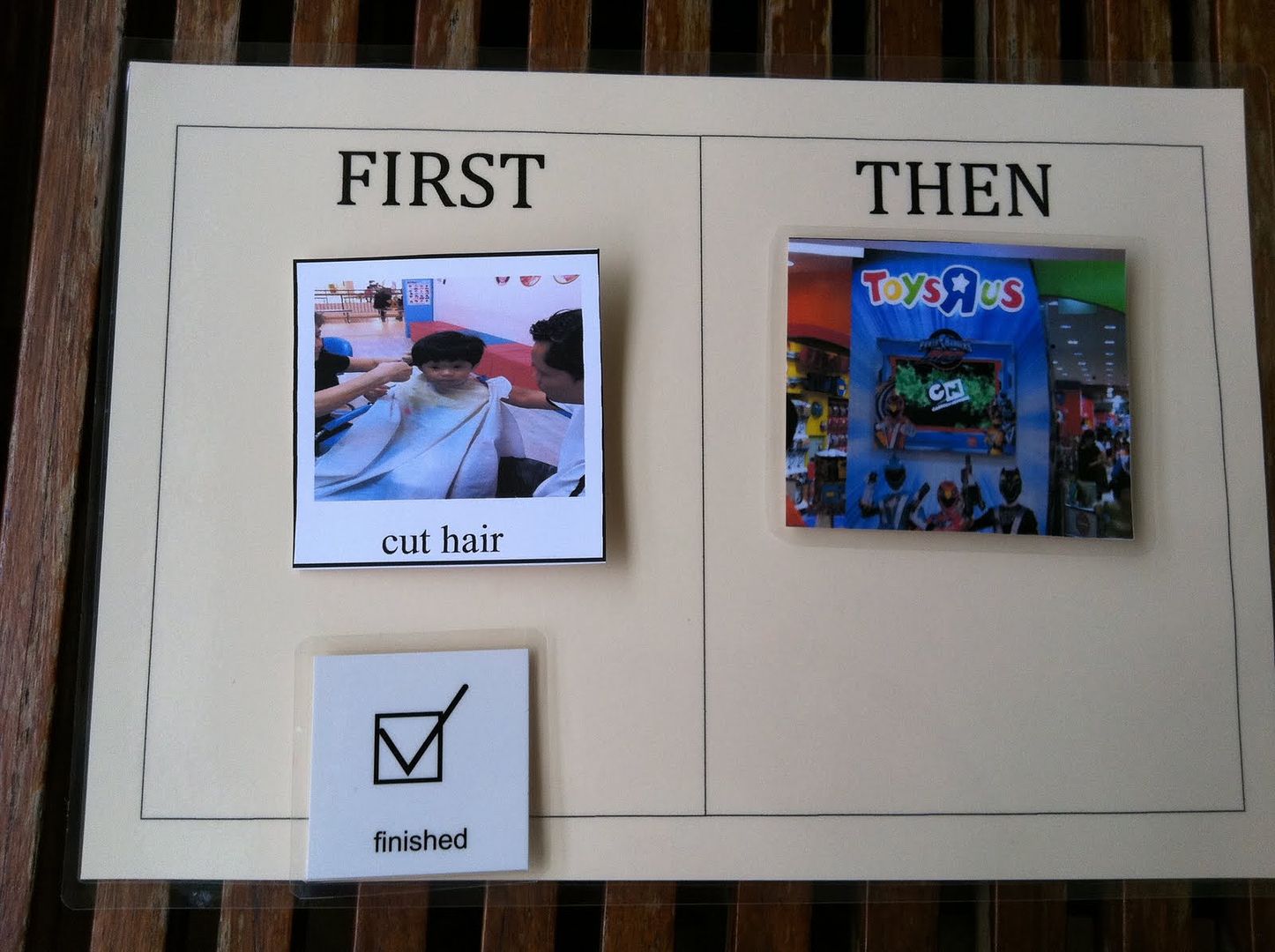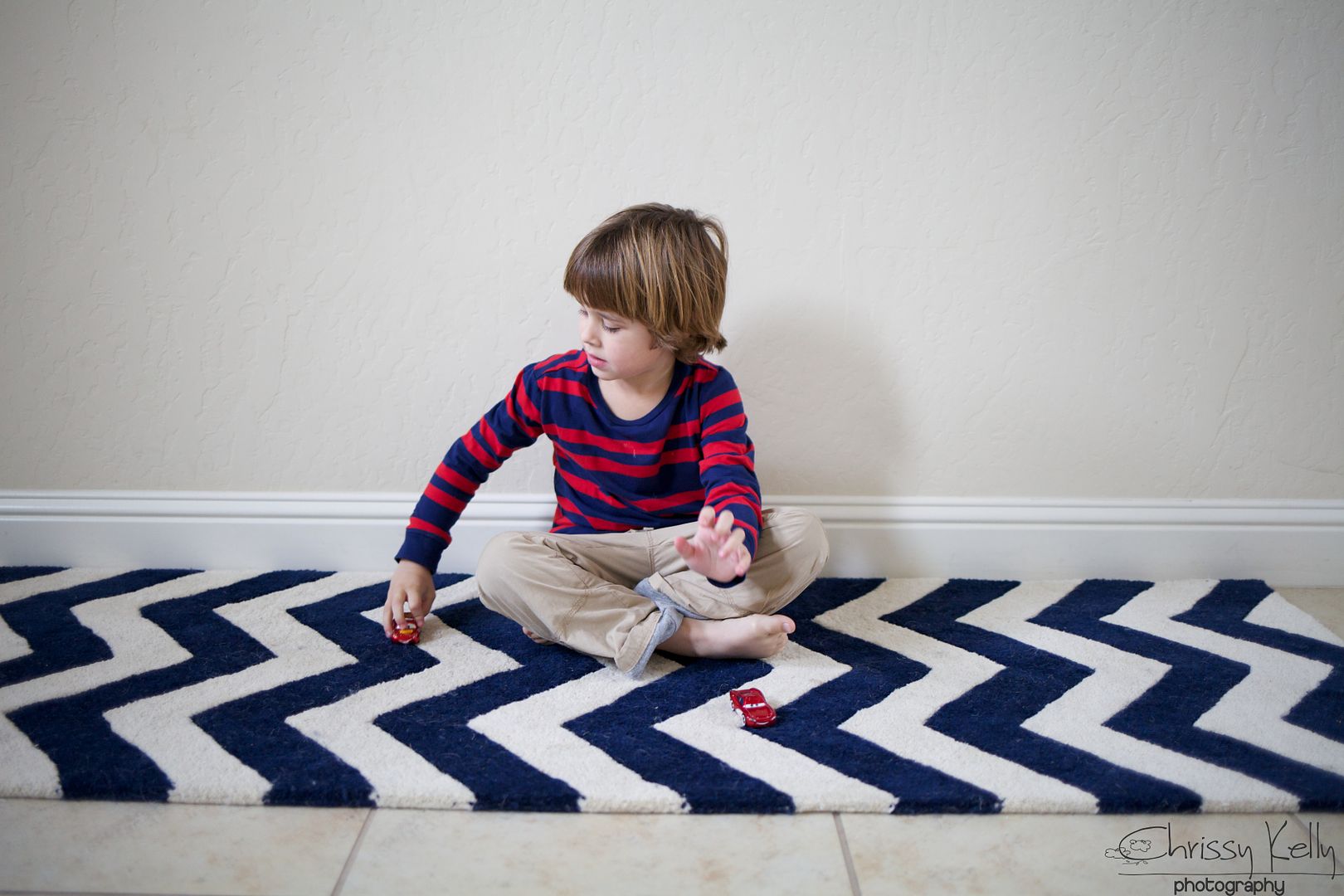Use Time to Decrease Transitional Tantrums: Many children have trouble leaving preferred places and activities. This is a BIG one for my 5 year old. There were times I wouldn't even take him to our neighborhood park because I was so scared of that awful moment when we had to leave. He was unpredictable and erratic. Sometimes he would scream and fall to the ground, or try to run into a busy street to get away from me, or lash out to hit me. It broke my heart and downright scared me.
One thing that has been life-changing for us is using Minute Warnings/Timers: Your child may need a 5 minute, 2 minute, or 1 minute warning before there is a change of activity. These warnings help the children prepare for the transition. They will begin to learn that the warning comes and then the change comes. Eventually, the minute warnings become routine, even if the next task is not.

We set a timer on our iphone.
"In five minutes you need to take a bath."
"In two minutes we are leaving the park."
This helps a child feel more in control without controlling us. When the timer goes off you have to carry through every single time. We did this continuously for two weeks before we started to see results. Now it's been years and it still works. Set your boundaries, stick to them, and follow through.
One thing that has been life-changing for us is using Minute Warnings/Timers: Your child may need a 5 minute, 2 minute, or 1 minute warning before there is a change of activity. These warnings help the children prepare for the transition. They will begin to learn that the warning comes and then the change comes. Eventually, the minute warnings become routine, even if the next task is not.

We set a timer on our iphone.
"In five minutes you need to take a bath."
"In two minutes we are leaving the park."
This helps a child feel more in control without controlling us. When the timer goes off you have to carry through every single time. We did this continuously for two weeks before we started to see results. Now it's been years and it still works. Set your boundaries, stick to them, and follow through.
FIRST/THEN: Many of our other tantrums are over wanting something they can't have at that moment. A toy, a snack, a trip somewhere RIGHT NOW. Or there is something they DON'T want to do. For many of these situations we use first/then. “First___, then____” statements are used to help a child finish a task before getting something motivating.

"First we finish our lunch, then we can go outside."
"First we will clean up, then we can go to the park."
Depending on your needs and your child's skill set- you can either do this verbally, use pictures, or write items on a dry erase board.

Many children with autism think in pictures, so that is often the initial go to method.
It's a simple phrase that provides structure in a child's mind and helps them follow the directions at hand. It can help decrease a child's frustration because they can understand exactly what is expected of them. This works like a charm for my 5-year old, Greyson. It probably took about two months for him to understand that he would get what he wanted as long as he FIRST did what was asked of him. This does not work for Parker who is three. He does not have the same understanding of language that his brother does and he hasn't grasped anything other than he's NOT getting what he wants RIGHT NOW. We still use this language because one day when he grasps language he will understand the importance of it.

"First we finish our lunch, then we can go outside."
"First we will clean up, then we can go to the park."
Depending on your needs and your child's skill set- you can either do this verbally, use pictures, or write items on a dry erase board.

Many children with autism think in pictures, so that is often the initial go to method.
It's a simple phrase that provides structure in a child's mind and helps them follow the directions at hand. It can help decrease a child's frustration because they can understand exactly what is expected of them. This works like a charm for my 5-year old, Greyson. It probably took about two months for him to understand that he would get what he wanted as long as he FIRST did what was asked of him. This does not work for Parker who is three. He does not have the same understanding of language that his brother does and he hasn't grasped anything other than he's NOT getting what he wants RIGHT NOW. We still use this language because one day when he grasps language he will understand the importance of it.
Reward positive behavior: Reinforcing language identifies and affirms childrens' specific positive actions and encourages them to continue their appropriate behavior. For example, to a child that shared their swing at the park you might say, "I really like how you shared and played so nicely with that little boy at the park." It's especially important to recognize behaviors that a child usually struggles with- sharing, being quiet, following directions. With these words, the adult lets the children know that their positive behaviors were noticed.
We continually point out good behaviors in areas the boys struggle. "I like how you are sharing your truck with Parker." "Good job cleaning up your blocks Parker." Recognizing good behaviors increases the likelihood that they will happen again. (Please note: this also works with husbands). In an environment with small children you are frequently saying: no, put that down, don't do that, put that back, you can't have that- you can't eat that, NO NO NO NO- sometimes it's so nice to recognize and focus on the good. Praise is one of the best reinforcers around.
For some children- praise means nothing. It's not rewarding, therefore, it does not increase the good behavior. In this case you must find something that IS rewarding. Sometimes a small reward is offered- a piece of candy or a token or sticker that when accumulated can be used towards a greater reward. I've heard some people say, "I don't like to bribe my child." To me- it's like getting a pay check for work. We all work for the reward, whether it be emotional, financial or edible or tangible.
For some children- praise means nothing. It's not rewarding, therefore, it does not increase the good behavior. In this case you must find something that IS rewarding. Sometimes a small reward is offered- a piece of candy or a token or sticker that when accumulated can be used towards a greater reward. I've heard some people say, "I don't like to bribe my child." To me- it's like getting a pay check for work. We all work for the reward, whether it be emotional, financial or edible or tangible.
Focus on what you want the child to do- not what you want them to STOP doing. How many of you have screamed at your child, STOP SCREAMING?!!!! with crazed eyes and clinched fists? (Guilty) Minimize the use of ‘don’t’ and ‘stop.’ For example, ‘Walk on the sidewalk’ can be much more effective than ‘Don’t walk on the grass’ for a child who might not hear the ‘don’t’—or for one who isn’t sure where the acceptable place to walk might be. This lets the child know exactly what you WANT them to do. 'Stop screaming' becomes, 'Quiet please', 'Don't color on the table' becomes 'Only color on the paper'. It's counter-intuitive to the ways most of us usually parent but it works. There are times when there's NO WAY around a don't/stop statement. DON'T COLOR ON THE DOG. STOP HITTING YOUR BROTHER. Use your best judgement- you'll figure out when you need to lay down the DON'T law.

Here I ignore his screaming because he was mad that I gave one of his cars to his brother when he didn't want to share.

Here I praise him, "Great job being quiet and playing with your cars."
I know- it feels a little weird at first, ignoring your child while they are screaming or throwing themselves on the ground. But when they do that- they are attention seeking and giving them any kind of attention reinforces that behavior. They will learn it doesn't work and realize they get more attention when their behavior is good.

Here I ignore his screaming because he was mad that I gave one of his cars to his brother when he didn't want to share.

Here I praise him, "Great job being quiet and playing with your cars."
I know- it feels a little weird at first, ignoring your child while they are screaming or throwing themselves on the ground. But when they do that- they are attention seeking and giving them any kind of attention reinforces that behavior. They will learn it doesn't work and realize they get more attention when their behavior is good.
Remain Calm (YOU!): This was a hard one for me to learn and is still a hard one for me to remember! This one is especially hard because what usually happens is your child goes out of control and then you quickly follow. It's exhausting, draining and frustrating. I take deep breaths and make sure my words sound calm- even if I'm not feeling it. I remind myself that I am the adult and if I expect my child to modify their behavior then I must too. Children don't always have the language to explain what they want and need and that can be extremely frustrating for them. I have had many, many more years of practice so I need to be much better at being kind, calm and patient while I lead by example.


I can't believe how much happier they are since beginning Behavior Therapy. They are so much less frustrated and so much more understood.
There is no one size fits all when it comes to parenting. However there is research and data supporting the above methods, therefore at least one of them is likely to work for you. Remember, parenting is a ride wild, and for the most part- everything hard we are going through with them is only a phase. IT WILL END. Sometimes all that is standing between you and your child's happiness is a little extra structure and control. If you have any questions or tips of your own- leave them in the comments.

Thank you for sharing! Staying calm when things escalate is something I so struggle with but desperately want to do. Love how you signed off too. :)
ReplyDeleteWhen we tell my Toby that "we have to X in 3 minutes" he always yells back "NO 3 MINUTES!" LOL but it does make the transition easier when those three minutes are up.
ReplyDeleteThe hardest one is the keeping calm part, but we're always working on it :)
Thanks for this Chrissy. Nice and clear and well explained. All good stuff, i really need to 'go bigger' with the visuals, we made a social story book for a recent transatlantic flight that I was so nervous about and it helped immensely. We also use a countdown clock timer (we cant use phone for it because iphones are irrestible to my little guy, so the sight of one means he cant think about anything else!) its been really helpful. Another thing I learned that I've found useful for all kids I'm with is instead of asking questions with a yes or no answer, to give choices. This avoids dealing with the flat out "NO!"... Unless he says no to both, that happens! But less when there are options given.
ReplyDeleteThank you for using your gift of writing to encourage and inspire - please know you really really do! Love Lottie
Chrissy you are such a wonderful person. Not only do you share your heart with us, but you also teach us. I know you are hesitant to put on the teacher hat because what works for your boys may not work for others and you feel bad if someone tries what you offer and it doesn't work. (At least I guess that)
ReplyDeleteI don't have children on the spectrum. I'm thankful because I know how difficult it was some days with my children, and I can't imagine how you moms and dads do it with all the additional stresses. But, your tips are great for all children, and you can bet I will file them away for when I have grandchildren!
Anyhow, I know I'm getting wordy here, and I have already gotten away from what I wanted to say. But thank you for being you, thank you for opening your heart to the world. I hope we help heal it in return.
Thank you for this reminder today. We practice many of these but it's always great to review with a clear fresh mind and strive to handle situations better in the future with many of these tips.
ReplyDeleteThank you for these! This is helpful for all children. I am learning how to talk to my 2.5 year old who is not speaking just yet. He gets frustrated when he can't tell me what he wants but I need to get him to understand that he has to vocalize it by just trying (which he is, just a little slow).
ReplyDeleteLove this post. I am going to share these with my husband
ReplyDeleteWe try to do all of these. First/then works wonderfully for my 8 year old. I am still working on the staying calm part.
ReplyDeleteVery useful tips, would try them with my niece n nephew :)
ReplyDelete